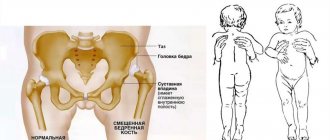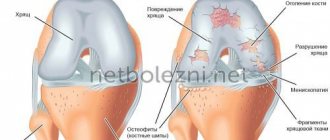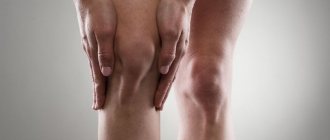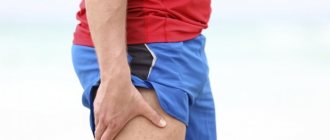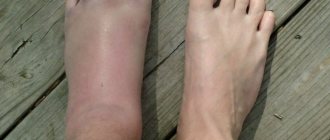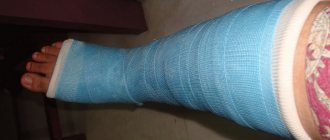Ankle sprain is a common sports injury, and 20% of patients with an acute ankle sprain subsequently develop chronic ankle instability. There are 2 million lateral ankle sprains reported annually in the United States, including injuries to the anterior talofibular ligament, calcaneofibular ligament, and/or posterior talofibular ligament. The literature highlights the high level of permanent disability and relapse.
Following an acute ankle sprain, difficulties with postural control, proprioception, muscle reaction time, and muscle strength commonly occur, which can lead to chronic ankle instability (CAI). Inability to jump and land within 2 weeks of a lateral ankle sprain, poor dynamic postural control, and poor performance on a function assessment 6 months after the first episode indicate a high likelihood of developing CNHS. Chronic instability includes mechanical instability (movements exceeding normal physiological limits) and functional instability (subjective feelings of instability associated with sensorimotor or neuromuscular deficits).
First aid
The body's first reaction to a twisted foot is acute pain that occurs in the area of the ankle injury, which may be accompanied by swelling of the foot and (or) ankle, hematomas, due to which the size of the foot increases several times.
At the same time, his speedy recovery and return to normal life will depend on how quickly the injured person receives first aid.
To prevent possible negative consequences after injury, the following actions must be taken:
- the leg must be secured using available means: bandage, gauze, handkerchief or neckerchief or scarf;
- the most affordable means of cooling an injured joint is a bottle of cold water (if you fell on the street) or ice from the refrigerator (if you were injured at home);
- If there are abrasions, wounds, or damaged fingers on the leg, they need to be treated with an antiseptic.
To relieve pain in the absence of other symptoms, the foot can be smeared with pain-relieving ointments:
| Name of the drug | Active substance | Effect of use |
| Finalgel | Piroxicam | Relieves pain, relieves inflammation, relieves fever |
| Fastum gel | Ketoprofen | Relieves inflammation, reduces pain |
| Nimid | Nimesulid | Reduces inflammation, eliminates pain |
| Diclofenac | Diclofenac-sodium | Relieves pain, reduces inflammation |
The listed funds are taken according to the instructions. In complex cases, the form of treatment and medications are selected by the attending physician, depending on the nature and extent of the injury.
Minor injury
The tucked leg hardly hurts, only slight discomfort is felt when moving, and ankle mobility is preserved. This may indicate very minor damage; excellent elasticity of the ligaments and healthy joints helped to avoid trouble.
Measures to take to fully restore mobility:
- free your feet from shoes and clothes, especially if socks or tights fit tightly around your ankle;
- ensure peace by fixing the foot in a comfortable position;
- reduce the load as much as possible for 2-3 days.
What to do if you fall, twist your ankle, and experience severe pain when trying to get up:
- it is advisable to free the foot from shoes and socks, since rapidly increasing swelling can lead to compression of the tissues;
- the injured ankle needs to be elevated so that it is higher than the level of the heart, this will reduce blood flow to the leg;
- if possible, the leg should be fixed and provided with complete rest, because it can twist, causing pain;
- Ice should be applied to the injury site to relieve pain and reduce swelling;
- a tight bandage is applied if it does not cause severe pain;
- if the pain causes suffering, you can take painkillers, but it is better to wait for the doctors to arrive without “lubricating” the symptoms.
If the injury occurred on the street, in transport, at the entrance
An accident can happen while walking, when going down the stairs unsuccessfully, or on public transport. What should others do if a woman carrying heavy bags or suffering from excess weight, an elderly man, or a child twisted her ankle in a public place or in transport?
Among the first aid techniques, the main ones remain the same as mentioned above:
- free the leg from everything tightly fitting it;
- ensure peace by fixing and using supports, fabric, clothing folded in several layers, placing the ankle above the heart: this will help reduce swelling;
- call the victim for medical help or take him to the emergency room, applying a bandage with an elastic bandage.
If trouble happens far from populated areas, any available means will be suitable for providing first aid.
- Bandages or strips of fabric are suitable as a fixing bandage for a short period of time.
- You can provide rest and limit the mobility of the twisted leg using straight sticks, branches, and boards.
- You can numb the injury site with ice and snow in winter, and a cloth soaked in cold water in summer.
The greatest danger is posed by such injuries received by the elderly, children, and lovers of outdoor activities far from settlements.
Immediate medical attention is required in cases where:
- the pain is unbearable, the foot cannot be bent or bent;
- it is impossible to lean on a twisted leg;
- a person experiences pain when trying to feel a twisted leg;
- within 1 – 2 hours, swelling, hematomas and hemorrhages appear at the site of injury;
- body temperature rises.
Emergency hospitalization is required if the leg twists and there are ruptures in the skin tissue, heavy bleeding is observed, bone fragments and torn muscle fibers are clearly visible. This picture indicates an open fracture with possible displacement of the bones, a high probability of infection, so help at home can result in serious consequences, including gangrene and even death.
How to avoid falling from a dislocation with weak ligaments
If your leg begins to break more and more often, you can fix the joint with special tapes or adhesive tape. Using the taping method, the joint will feel healthy. For this:
- degrease a clean foot with an alcohol-containing composition;
- glue a piece of plaster to the place where the ligament is stretched (where the leg turns in);
- attach the second piece of the patch to the sole under the ankle joint and up the leg to the entire lower leg.
Patients note that after the procedure:
- pain and/or discomfort goes away;
- the joint does not wobble and is less likely to give way;
- stability increases;
- the gait becomes smooth.
This support does not cause discomfort and can be changed (although it can be worn for a long time, up to a week). Taping only temporarily relieves symptoms; it does not replace a trip to the doctor, examination and course of therapy.
Habitual dislocation
The development of habitual dislocation can be stopped by fixing the joint.
The so-called habitual dislocation of the ankle joint can be caused by frequent twisting of the foot while walking due to weakness of the ligaments.
The ligamentous apparatus acts as a kind of corset that holds the joint and bones in a certain position during movement. If the ligaments are weakened, the bones are not fixed and move relative to each other.
This happens often if measures are not taken to strengthen the ligaments. As a result, a condition called habitual dislocation is formed. Without treatment, the disease progresses and leads to the fact that the ligaments will no longer hold the joint together, moving the leg and relying on it will be an impossible task.
Why do the legs become weak and weak during VSD?
I’ll say right away that organic diseases that lead to weakening of the muscular system, problems with joints and other reasons not related to a disorder of the autonomic nervous system are not considered here. If you are unsure of the absence of such diseases, go to the doctor and get examined.
Weakness in the legs caused by anxiety-panic disorder is not accompanied by fights or cramps.
Here I talk about what I know about wobbly legs during vegetative attacks that do not have specific causes. That is, all the person’s diagnostic data are normal, but his legs periodically give way. And this does not happen spontaneously out of the blue, but precisely during periods of anxiety, panic, worries and other emotional outbursts of a negative nature.
So, what is the main reason for weak legs in VSD and neurosis?
The fact is that nature has it in such a way that when we experience fear and anxiety, our brain is sure that we are in danger.
Thousands of years ago, when there were no large civilized cities, people experienced fear and strong emotions, mainly only when they were in real danger. For example, while hunting wild animals or when encountering dangerous plants, inexplicable things.
The instinct of self-preservation forced a person to fight or run away to save his life. Time passed, people developed, but these instincts did not go away.
Today, modern man in 95% of cases suffers from anxious feelings, without having a real threat. The endless flow of information makes us worry.
So what does the instinct of self-preservation and weakness in the legs have to do with it?
It's simple. When the brain receives a signal of danger, it sends a command to the body to prepare for fight or flight. The muscles tense, the blood drains from the stomach and head, and adrenaline is produced. The body is mobilized and ready for active action. Since the brain knows that it is possible to escape by running, the muscles of the legs are most tense.
But time passes and nothing happens. The unfortunate man sat on his chair, experiencing another panic attack, and continues to sit on it.
The brain understands that no action is taking place, and it is not worth keeping the body in high tone for too long. The next relaxation signal comes. And most of all this relaxation is felt in the muscles that were more tense. That is why the feeling of weak and weak legs occurs.
Something similar can be felt after physical training. When, after intense stress on your legs, give them complete relaxation. You can even feel a trembling.
Typically, weakness and weakness with VSD are not permanent and disappear within an hour or even faster.
If such sensations occur more often and last for a long time, you should consult a doctor.
Treatment
How to treat a sprained ankle largely depends on the condition of the patient, as well as on how correctly first aid was provided for a sprained ankle. In the case where first aid was carried out in a timely manner and taking into account all recommendations, the treatment process will subsequently be easier.
First of all, it is important to understand what to do when you sprain your leg: the ankle joint must be at rest. Do not walk or lean on the affected joint
If possible, keep your leg elevated. To quickly treat a sprained ankle or other ankle injury, you should immediately consult a doctor and get examined. If the injury is mild or moderate, your specialist will most likely recommend treating your ankle sprain at home. However, to treat a sprained foot at home, you must strictly follow the treatment regimen prescribed by a specialist.
The doctors
specialization: Traumatologist
Sarukhanyan Anna Robertovna
2 reviewsSign up
Find a doctor and make an appointment
Medicines
Ibuprofen Nimesil Diclofenac Ketorol Nise Voltaren Emulgel Traumeel S Lyoton Troxevasin Apizartron Capsicam
Treatment for ankle sprains is carried out using a number of medications that reduce pain, swelling and other manifestations of the pathological process.
- To reduce the severity of pain and inflammation, the doctor prescribes NSAIDs. Ibuprofen, Nimesil, Diclofenac, etc. may be prescribed.
- It is practiced to take painkillers - Analgin, Aspirin.
- Local remedies are widely used - ointments, creams, gels. The most popular products of this type are Fastum, Ketorol, Nise, Voltaren Emulgel, Traumeel S, Lyoton, Troxevasin, etc.
- Warming ointments are also prescribed - Apizartron, Capsicam, etc.
- B vitamins are also shown, helping to restore the elasticity of fibers.
However, it is not recommended to independently select an ointment for sprained ligaments in the leg - a specialist can prescribe the optimal remedy after making a diagnosis.
Procedures and operations
It is very important to remain calm during the treatment process, try to walk less and put minimal stress on your leg while walking. If the swelling does not go away, it is necessary to reduce the load, especially in the first days after injury
If a bruise or other injury occurs and a severe sprain occurs, care should be taken to relieve swelling and prevent the development of severe swelling. For this purpose, after an injury, a compressive elastic bandage is applied to the damaged area.
Cold applied to the damaged area after an injury will also help reduce pain and slightly reduce swelling. It is recommended to cool the affected joint for at least 15 minutes.
During the treatment process, a special ankle sprain will also help you cope with pain. You can buy a fixative at a pharmacy. If necessary, a bandage on the leg with a compress or medicine is applied under it. Also, a bandage on the leg can be applied using an elastic bandage and other means. You can use an orthosis when walking.
Physical procedures are practiced, in particular dry heat, etc. Regenerative massage is also carried out.
It is important to carry out not only therapeutic procedures, but also to practice exercises that will help speed up the rehabilitation process. You can start exercising 2-4 days after the injury, depending on the severity of the injury
You need to work out the joint when the pain subsides a little and does not interfere with the exercises. The set of exercises consists of rotations in different directions, extensions, and flexions. The rehabilitation program should be drawn up by the attending physician - only in this case will it be effective and help you recover faster.
Surgical intervention is practiced for severe lesions. During the operation, damaged tendons are repaired.
When it comes to how long it takes for an ankle sprain to heal, the timing of ankle ligament recovery depends on the severity of the injury. In most cases, the normal condition of the foot is restored in about 2 months. But about a fifth of people experience periodic unpleasant symptoms even after recovery. How long a sprain takes to heal depends on how correct the treatment regimen is.
Associated damage
CNGS is often associated with lesions arising from associated factors. They do not necessarily occur with chronic hepatitis C, and if they do occur, they do not occur simultaneously. Associated lesions that may accompany CNS include complex regional pain syndrome, neuropraxia, sinus tarsus syndrome, ligamentous disorders such as peroneal tendinopathy, dislocation or subluxation, impingement syndrome, fractures such as fracture of the anterior process of the calcaneus, fibula bone and lateral process of the talus, articular mouse and osteochondral lesion of the dome of the talus or distal tibia.
Sinus tarsus syndrome
Sinus tarsi syndrome is common among basketball and volleyball players, dancers, and overweight people. It is also common in patients with flat feet and overpronation deformities. This condition includes pain and tenderness in the sinus tarsus, i.e. in the area of the lateral part of the hindfoot. It can result from a single or multiple ankle sprains. The syndrome is diagnosed by exclusion, although MRI may show signs of inflammation. Sinus tarsi syndrome is treated with primary ligamentous repair, tendon augmentation, or both.
Osteochondral defects
Osteochondral defects are damage to the talus bone. These may include swelling of the cartilaginous layers and intraosseous cyst-like lesions or even fractures of the bony layers and cartilage. Osteochondral defects can result from traumatic injury or repetitive trauma. Clinically, there is swelling, instability of the ankle joint and prolonged pain. The exact mechanism is not fully understood. Surgical treatment depends on the nature, size and location of the lesions.
Peroneal tendinopathy
Peroneal tendinopathy is a chronic inflammation of the peroneal tendon that results in weakness of the active stabilizers of the ankle. This occurs when a person performs repetitive activities that irritate the tendon over a long period of time. Additionally, improper training and wearing poor shoes can cause peroneal tendinopathy. People who have hindfoot varus are more likely to develop this condition. In most cases, the disease is treated conservatively, but surgical treatment using an open method or endoscopy is gaining popularity.
Subtalar joint instability
Subtalar joint instability is a disease whose etiology is still unknown. Diagnosis is difficult. It may have symptoms of CNGS. Clinically, patients with subtalar joint instability exhibit increased internal rotation. The condition is treated with tendon transfer or tenodesis, such as the Chrisman–Snook procedure, or alternatively with anatomical ligament reconstruction.
What can be the consequences of a twisted foot?
Such an injury can be dangerous because it leads to a variety of complications. If a person retreats and twists a limb, then the following troubles can await him:
- Sprain. When the foot is turned inward, the ligamentous apparatus is stretched. As a result, the victim will experience severe pain and lameness. With timely and adequate treatment, the injury quickly stops and no longer reminds of itself.
- Ligament tear. When the foot is significantly twisted, one or more ligaments are torn. This is an extremely painful injury. Sometimes the consequences of a ligament tear are much more serious than a sprain or fracture. Treatment for this injury can take a whole month.
- Ligament rupture. Complete rupture of the ligaments is accompanied by dysfunction of the ankle. The victim cannot lean or even stand on his leg, and attempts to move his leg lead to severe pain. Treatment of ligament rupture involves immobilization of the limb, in which case a plaster cast is applied. Sometimes such an injury requires surgical intervention. Recovery will last two months.
- Subluxation. With injuries of this kind, the bones are displaced relative to each other. To make a correct diagnosis, radiographic examination is necessary.
- Dislocation of the ankle joint. If you twist your leg too much to one side, it can become dislocated. This damages the integrity of the joint capsule. Treatment for the dislocation will take three months. If not treated in a timely manner, the injury may become chronic, which can lead to permanent dislocations.
- Fracture. Damage to the bone can occur as a result of severe twisting of the foot, tearing the ligaments and breaking the integrity of the bones. The damaged limb swells, hemorrhages appear, and the foot becomes bluish. For an ankle fracture, treatment and recovery will take four to six months.
Symptoms of Ligament Weakness
Weakness of the ligaments will inevitably lead to injury
. People suffering from this disease find it difficult to endure even minimal physical activity during physical education, it is difficult not only to run, but also to walk quickly, and sometimes the leg gives way at the ankle at the most unexpected moment.
High-heeled shoes for women with weak ligaments become a real instrument of torture; the foot can give way at any time. It is difficult to maintain balance in uncomfortable shoes, so falling is almost inevitable.
You can distinguish a banal accident from ligament weakness by additional symptoms:
- after a short and rather slow walk, your toes (middle and ring toes) hurt;
- legs get tired quickly from the loads;
- If you place both feet calmly next to each other, the one in which the pathological process is developing will fall slightly inward.
Several factors contribute to the development of this condition:
- age: older people are more likely to experience ligament laxity;
- sedentary lifestyle: lack of reasonable exercise and ankle training leads to weakening of the ligamentous system;
- obesity;
- congenital pathologies of ligament development;
- high arches of feet;
- history of joint injuries, ligament ruptures (sports or other nature);
- Marfan syndrome;
- psychosomatics. Psychologists explain this phenomenon in terms of personality traits and emotional experiences. Problems with feet can be associated with the attitude towards your own mother, difficulties with children. Ankle disease is associated with the patient’s desire to develop in several directions at once.
Neglected cases without appropriate therapy can lead to a condition of habitual ankle dislocation. Let's take a closer look at this disease.
What to do if your legs are weak?
During and after an anxiety-panic attack, if possible, it is better to lie down or sit down and allow the body to completely calm down and recover.
The tips below will help you get rid of this unpleasant symptom:
- Move more, walk, take walks every day.
- Do any sport that trains your muscles.
- Massage your legs to help relax cramped muscles.
- Wear comfortable shoes.
- Use tonic foot creams.
- Take contrast baths for the lower extremities (for VSD, a contrast shower for the whole body is useful).
- When working sedentarily, get up from your chair every hour and do a warm-up for 10 minutes.
Of course, the main prevention of weakness in the legs with vegetative-vascular dystonia and neurosis is strengthening the nervous system. The less often you worry, get nervous, experience groundless fear and panic, the less unpleasant sensations you will have.
What not to do after spraining your ankle
There are a number of measures that are strictly contraindicated, since they can only worsen the condition of the victim:
- Warm baths and hot compresses. In the first week after an injury, it is strictly contraindicated to use warm compresses, lotions or baths. They will only increase swelling, pain and bruising.
- You can’t walk a lot, put a lot of stress on your leg, or play sports. This will only worsen the condition of the foot and add more unpleasant symptoms.
- In the first week after injury, massage is contraindicated. It increases blood circulation, which will lead to even more swelling, hemorrhage and inflammation.
- Immobilization for too long is just as dangerous as being too active. In the first week after the injury, rest is necessary, but then a gradual increase in the load on the damaged joint is required. Physical activity will restore muscle tone, improve blood circulation, and restore joint functionality. The only exceptions are very severe injuries, when walking is impossible due to pain. In this case, you should not wait for improvement on your own; it is better to consult a doctor for medical help.
Predictors of CNGS
Doherty believes that a combination of the SEBT balance test and the Foot and Ankle Ability Assessment Test (FAAM) can predict the likelihood of developing CNHS.
- The SEBT balance test (especially the posterolateral direction) has a very significant predictive ability for CNSH.
- The FAAM test (especially the activities of daily living subscale) can be used as an objective assessment of recovery from acute lateral sprain. A low score on the questionnaire, especially in combination with a deficit in movement in the posterolateral direction on the SEBT balance test, indicates a high risk of developing CNHS.
When to Seek Medical Help
Not in all cases, if we sprain our foot, we need to run to a medical facility. This is a fairly common injury, which most often has a successful outcome and goes away on its own without consequences. But in some cases, the damage can be much more serious, and medical help cannot be avoided.
It is necessary to seek the help of specialists in the following cases:
- if pathological mobility has appeared, which leads to joint instability;
- in the presence of visible bone deformation;
- if pain is felt on the second day after palpation;
- if after a week it is still impossible to get back on your feet;
- in the presence of severe pain and swelling;
- when numbness occurs in the foot or a certain part of it (this occurs when nerves are damaged).
If you still have the above symptoms, you should definitely visit a traumatologist. If these signs are not observed, then you should wait a week to see how the foot feels. Usually, when ligaments are damaged, symptoms increase after a few days, and instrumental studies become more informative than immediately after the injury.
Why do ankles roll?
Doctors often encounter complaints from patients whose ankles twist, causing falls and sometimes injuries. Probably each of us has sprained our ankle at least once. Many chalk it up to simple clumsiness or unevenness on the road. But it can be a serious symptom of ligament laxity.
Reference. The bones are held together by ligaments consisting of dense elastic tissue. They hold the leg in the correct position, limiting excessive bone mobility. If this tissue is weakened, the bones begin to move from side to side and the leg becomes twisted. This is instability, or weakness, of the ligamentous apparatus of the foot.
There are other symptoms of ligament weakness. This includes frequent turning of the foot inward and uncertainty when walking. With a weak ligamentous system, it is difficult to run or walk on uneven surfaces, because every stone can lead to injury. People with this problem find it difficult to do regular physical exercise.
There are additional signs that indicate ligament weakness. For example, the ring and middle toes hurt, even after walking calmly. In the morning, before getting out of bed, you may notice that the foot is slightly rolled inward. Rapid leg fatigue is also a symptom of this pathology.
Gradually, the problem develops into constant dislocations and subluxations of the ankle joint . With these injuries, the bones are displaced relative to each other, and this displacement is repeated systematically. This is called habitual dislocation, or subluxation.
Unlike a regular dislocation, there is practically no pain. The person simply ignores the problem, sets the dislocation and moves on. However, the disease itself progresses, and the ligaments become more and more loose. If treatment is not started on time, the consequences can be very serious.
When is a doctor needed?
If the victim exhibits the following symptoms, then he must be immediately taken to the hospital and shown to a traumatologist:
- the pain is very strong and does not go away for more than an hour;
- after injury, joint mobility has decreased;
- obvious bone deformation has occurred;
- when touching the skin of the ankle, a sharp pain is felt;
- there is no way to stand on the injured leg;
- there was a feeling of numbness in the limb;
- swelling increases at the site of injury and a hematoma forms;
- tingling or numbness is felt in the ankle area;
- severe pain does not disappear, the ankle is swollen, bleeding appears;
- The victim had previously suffered a joint injury.
If you notice the described symptoms, you should consult a doctor.
Also, if at first there were no serious problems, but after 4 days it is painful to step on the injured limb, you should visit a traumatologist. To make a correct diagnosis, X-rays, ultrasound and computed tomography are prescribed.
When and why you need to see a doctor urgently
If you fall and a ligament ruptures or tears while twisting your foot, you should immediately consult a doctor. The symptom will be acute pain that does not subside after rest. The doctor will conduct a clinical examination, which may include the following methods:
- inspection;
- survey about the causes, location of the injury and the patient’s feelings;
- X-ray.
Then, if the injury is confirmed, an immobilizing bandage is applied, and, if necessary, non-steroidal anti-inflammatory drugs that have an analgesic effect are prescribed. After the rehabilitation period, physiotherapy is prescribed.
Treatment method
An ankle injury requires immediate help, since such injuries are dangerous “old injuries”, when the signs appear weakly, but after a few weeks it is no longer possible to treat the injury conservatively
It is important to provide first aid correctly and organize further treatment.
First aid to the victim
When an ankle is injured, it is important to provide competent assistance to the patient. First aid to the victim is as follows:
- immobilization of the limb - the leg must be fixed in the position it remained after the injury. You should not try to straighten the joint - just apply a splint or something similar, made from scrap materials, to your leg and wrap it tightly so that there is no additional damage;
- rest - there is no need to force the patient to move his leg or try to walk to check for a fracture. All this not only provokes pain in the victim, but can further aggravate the ankle injury. Before doctors arrive or the patient is delivered to a medical facility, the limb should rest;
- Ice is a great way to relieve pain and prevent swelling. Ice is applied as soon as possible after the injury to prevent tissue swelling from increasing. Swelling will cause compression of blood vessels, provoke pain, and interfere with diagnosis, so it is necessary to get rid of it as early as possible;
- compression - after applying a splint, you need to bandage your leg as tightly as possible to prevent excessive mobility. If the leg is bandaged too tightly, this will cause blue toes and increased swelling - then it is recommended to loosen the bandage;
- If possible, the injured limb should be elevated - this will once again prevent swelling and help the patient wait more comfortably for qualified help.
First aid should be provided as early as possible by passers-by or other people to whom the victim may turn. Consultation with a doctor in such a situation is mandatory.
What not to do if you have a lower leg injury
A lower leg injury may seem simple at first glance. Swelling is only a short-term symptom, think patients who have received such injuries. The fact is that the body, in a state of shock after receiving an injury, mobilizes its forces, and indeed there are cases when patients with serious injuries calmly go home, feeling only slight stiffness. However, the dislocation of the foot does not go away, the signs of injury intensify, and compresses, cold or ointment at home do not bring any results.
It is especially difficult for doctors to work with older, more complicated injuries, so it is important to seek help on the day the injury occurred. An increase in symptoms occurs after shock decreases as a protective reaction
By evening, the leg may become very swollen and so painful that it is impossible to step on it. Therefore, victims should never do the following:
An increase in symptoms occurs after a decrease in shock, as a defensive reaction. By evening, the leg may become very swollen and so painful that it is impossible to step on it. Therefore, victims should never do the following:
- stand up independently, lean on the injured leg;
- try to reduce the dislocation;
- refuse hospitalization;
- warm the injured leg with compresses, heating pads, and use strong painkillers;
- load the joint.
Method of treating injuries
If an ankle injury occurs, the victim is taken to the traumatology department, where he will be examined by a doctor. After a visual examination and x-ray, the doctor will make a diagnosis and prescribe treatment.
Some ankle injuries can be treated conservatively.
More serious injuries must be treated surgically. This treatment is carried out for isolated ankle fractures with interposition of soft tissues, and for complete ruptures of the ligamentous apparatus. Surgery is performed, after which the leg is placed in a cast, and if necessary, bone traction devices are used. In some cases, it is possible to manually reduce the joint and achieve the correct position of the bones, but this possibility is assessed by the doctor after receiving an x-ray. Some patients may also benefit from bone traction.
What is not recommended to do
To minimize unpleasant consequences and avoid possible complications when treating at home, you should not:
- Take hot baths in the first days after injury
. This should not be done, as hot water will accelerate blood flow to the damaged area, which will lead to increased swelling and inflammation. - Play sports and move actively, despite the pain
. This can damage the sore joint even more. - Massage the area near the injury
. This will also cause increased blood circulation, and with it, increased swelling. In some cases, bruising may occur.
- Do not remain at rest for too long
. You should avoid sudden movements for a day or two. During this period, physical activity should be minimal. But, on the third day after receiving a bruise or sprain, you can gradually stand on the injured leg. This will promote speedy healing of the injury. Exception: conditions that preclude movement due to severe pain (fractures, dislocations). To treat them you need to see a doctor.
If you follow these basic rules of behavior, all negative consequences from injury will be minimal. Also, for preventive purposes, after complete recovery, it is recommended to use suitable shoes with orthopedic insoles.
Alternative medicine
Even in ancient times, they tried different methods of treatment when someone twisted their ankle. Among the methods there are those that are considered very effective, but not everyone decides to try them.
The child twisted his leg, suffered a dislocation, and after a short time - again and again in the same joint. This is a standard case of habitual dislocation, which was “gotten” by overly impatient children, and sometimes by adults who did not want to give the limb the prescribed period of rest, and did not receive enough vitamins necessary for the elasticity and strength of ligaments and bones.
For such a hurry, a woolen “belt” was knitted and fastened on the ankle; yarn made from dog hair was considered the best. One had to wear such a bandage for the rest of one’s life; it was believed that a spell read by a healer gave it healing properties. Maybe so, but the wool itself can warm, when rubbed it is easy to massage and relieve pain. Even now, many people tie a woolen thread on sprained joints, broken fingers, and sprained ankles.
The egg also cured many bone diseases. The white was separated from the yolk, beaten and placed on a cloth that was wrapped around the ankle. When dry, it perfectly fixed the joint, preventing too much strain on the leg. The yolk was mixed with honey and applied to the affected area when the foot was twisted or bruised, which relieved pain and reduced swelling. The dried egg shell was ground into powder, which was to be drunk to strengthen the bones. So an irreplaceable source of calcium was found by our ancestors.
If a child twisted his leg, it hurt and swelled very much, he was advised to “pee” on the sore spot. Children's urine was considered a medicine not only for him; rags soaked in it were also applied to an adult after he injured his ankle. But only children’s urine was considered medicinal.
A nickel, a five-kopeck coin made of copper, or a silver spoon, which was tightly wrapped with bandages, was applied to the site of swelling. It was believed that the metal would take away all the pain and prevent swelling from developing. And this is quite understandable today - cold and immobility help in the first days after injury.
Therapy for ligament weakness and habitual ankle sprains
Weakening of the ligaments and the state of habitual dislocation, when the leg twists at the ankle literally out of the blue, requires strengthening of the ligament corset. To do this, there are several effective exercises that need to be performed daily to achieve the desired result.
Daily ankle exercises should take about 20 minutes. You need to start and end the complex with a light warm-up. By the way, it can be done throughout the day, whenever possible, it is simple and does not attract unnecessary attention. You need to rotate your feet in different directions, turn left and right, stretch up and down.
The complex should include walking on your heels, toes, and the inside and outside of the foot.
Then you need to move on to exercises with an elastic band and do 2-3 approaches:
- Secure the elastic band with one end on your left leg and the other on your right leg. With your heels together, you need to lift the toes of both feet off the floor and spread them in different directions.
- Fix the elastic band on any support with one end and the opposite end on the foot. Place the heel of this foot on the floor and pull the elastic band, pulling the toe toward you.
- For this exercise you need a rolling pin or a bottle. You need to sit down and put an existing object under your feet. You need to roll this object on the floor with your feet for 10-15 minutes.
- Jumping rope is useful for strengthening the ligaments of the foot. Attention! They are only safe if there is no ankle injury.
The right shoes
The right shoes should securely support the foot and ankle.
If the ligaments are weak, it is important to choose the right shoes and/or insoles. It should be comfortable, with low heels or platforms, made of hard, elastic, natural materials that hold the foot well. It is better to choose high boots.
Patients often turn to an orthopedist with the complaint: “My ankle twists and I fall, what should I do?” In such cases, the doctor may prescribe special orthopedic shoes. It will be just high with reliable fixation of the ankle joint, a thick sole, semi-rigid instep support, a tight back and a wide toe.
These boots should have a removable insole.
By the way, you can choose a special orthopedic insole and put it in any suitable favorite pair.
Psychosomatics of injuries (arms, legs, knees, head)
Each of you has heard the phrase “Accidents are not accidental.” There is something bewitchingly mystical about it... It is true that not only luck is a pattern in a person’s life, but also accidents. Everything that happens to us is a natural process. Therefore, in this article I will talk about the causes of psychosomatic injuries (arms, legs, knees, head).
In fact, all injuries have one reason or another. Of course, no one consciously wants a “brick on their head”, a car accident or a fracture.
It is difficult for the average person, who only cares about his own life, to obtain statistics on the causes of human injuries. However, such statistics accumulate among specialists in helping professions (psychiatrists, psychologists, etc.). And, of course, from insurance companies.
They clearly monitor all these points, since everything here is tied to insurance payments. For example, a less experienced driver with little experience pays a much higher insurance amount than an experienced driver.
Foreign studies have found that many people tend to have accidents not because they were distracted and tired, but because they have a certain personality structure within them.
It is the structure, and not a separate character trait, such as slowness in action, for example.
Then the question naturally arises:
And another question: “How did it happen that I have such a personality structure?” And another question: “Is it possible to do prevention?”
